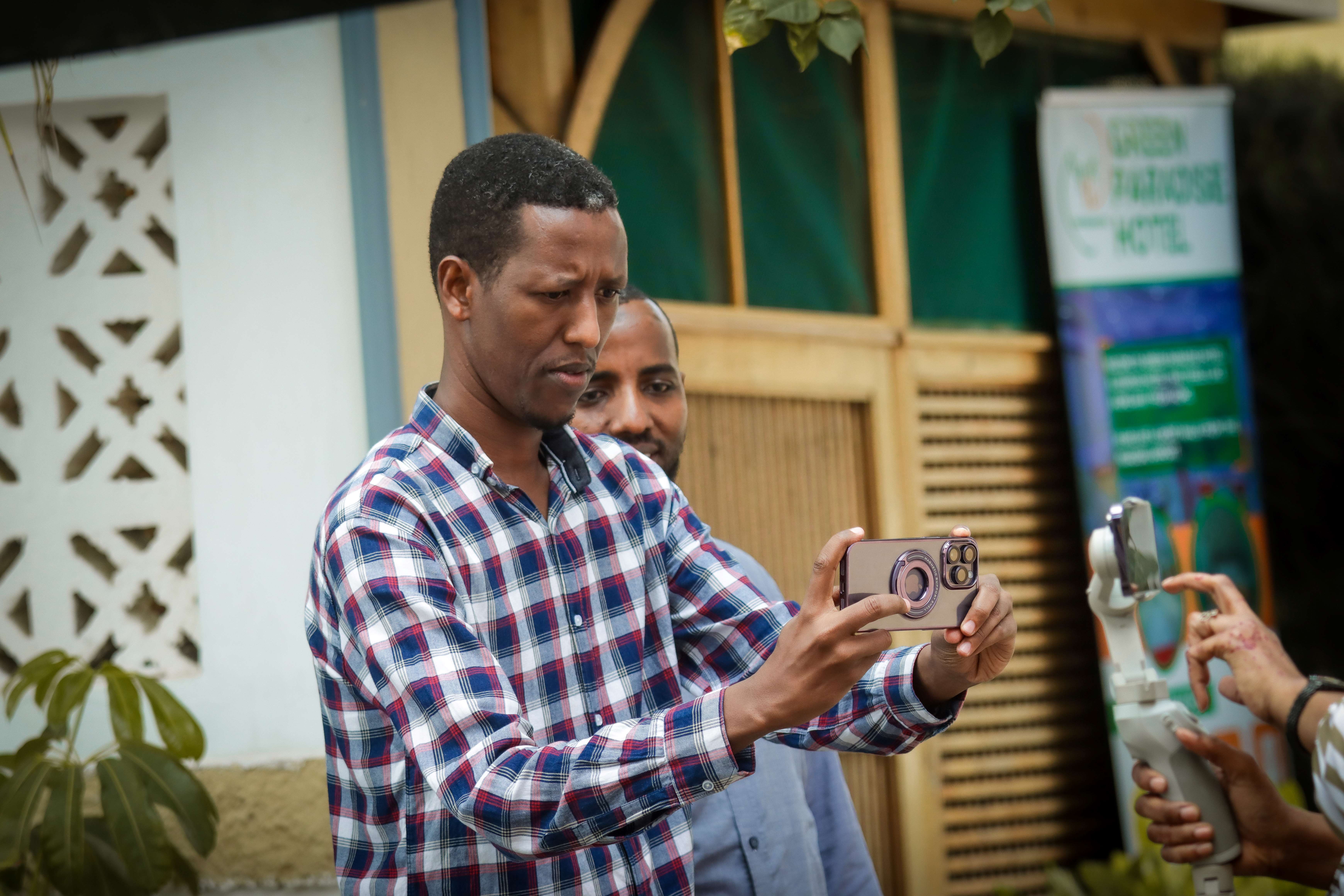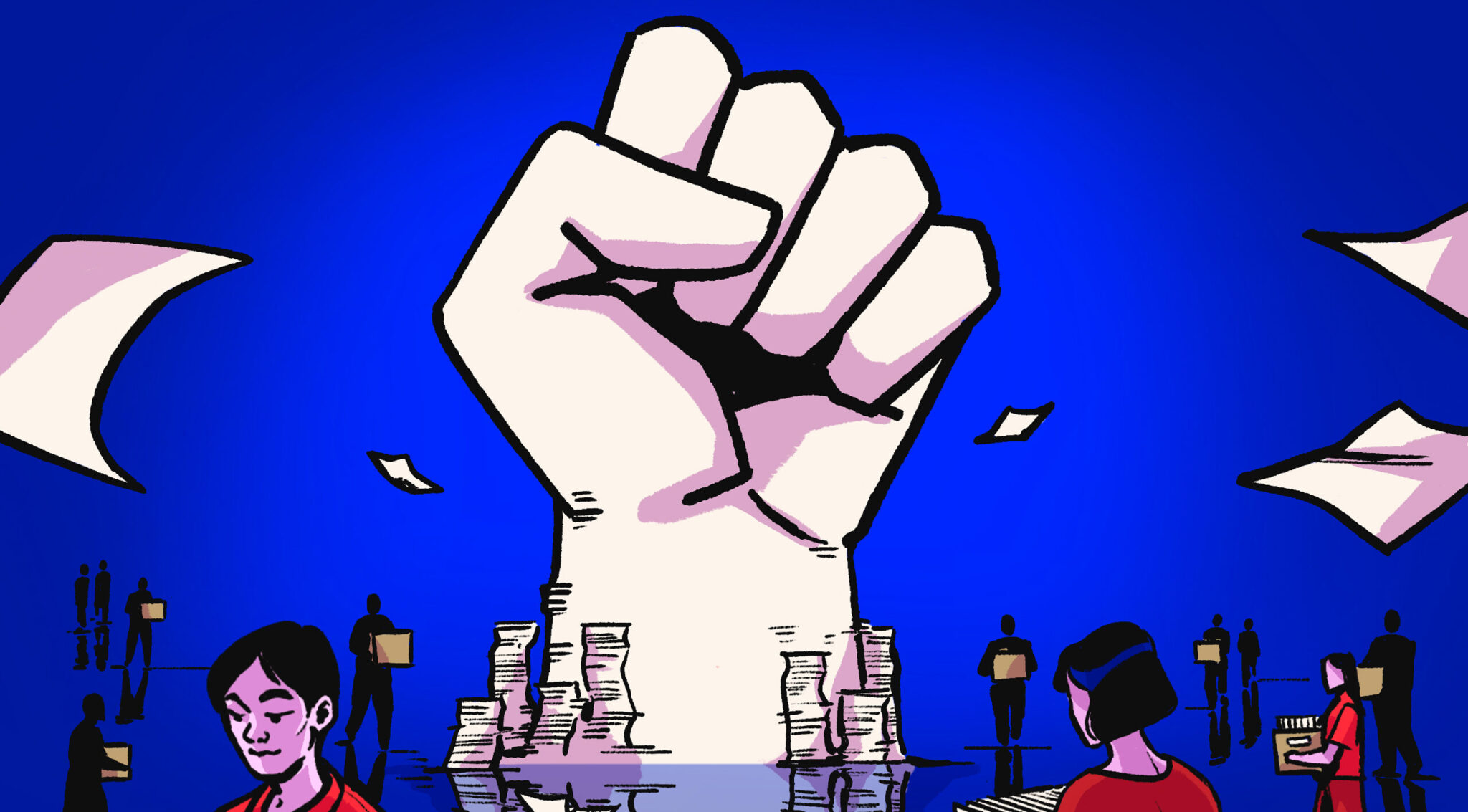يتناول كتاب إعلام الميتافيرس صناعة الإعلام في علاقتها مع تقنيات الثورة الصناعية الخامسة والويب، الصادر مؤخرا للدكتور محمد عبد الظاهر، أستاذ مساعد للإعلام والعلاقات العامة والمتخصص في وسائل الإعلام التفاعلية وصناعة المحتوى بتقنيات الذكاء الاصطناعي سنة 2022.
يبرز الكتاب قضايا تربط بين إعلام الميتافيرس والذكاء الاصطناعي في مجال الإعلام، وإمكانية صناعة المحتوى بكل أشكاله، ويتساءل عن الفرص الحقيقية لوسائل الإعلام وعن التحديات التي تواجه صناعة المحتوى من أجل التصدي لها بالطريقة المثلى. كما أنه يحاول توضيح بعض المفاهيم التي تسبب التباسا كبيرا خاصة بين الأكاديميين والباحثين.
يقدم الكتاب رؤية مستقبلية عما يسمى بصحافة الجيل السابع، وهو مفهوم جديد يحمل ثورة في تقنيات وأدوات وسائل الإعلام وتتبع عصر صحافة الذكاء الاصطناعي حيث تزدهر مع صعود الثورة الصناعية الخامسة. ومن المتوقع أن تبدأ في عام 2040.
ويحدد الكتاب سمات رئيسية لحقبة صحافة الجيل السابع تختلف عن صحافة الذكاء الاصطناعي وهي:
· لصحافة الجيل السابع القدرة على التنبؤ بالأخبار وعمل القصة قبل حدوثها، تماما مثل أخبار أسواق المال والطقس حاليا.
· اعتماد صحافة الجيل السابع كليا على تقنيات شبكات الجيل السابع، حيث يمكنها تغطية أي شيء في أي مكان في العالم.
· اختفاء وظيفة المرسل من العملية الاتصالية.
· تساعد صحافة الجيل السابع على بروز المؤسسات الإعلامية مجهولة الهوية، وتلعب دورا مهما في نشر المحتوى الإعلامي عالميا.
· سوف تدار صناعة الإعلام والترفيه من قبل الشركات والمؤسسات والأشخاص الذين ليس لديهم أي معرفة بمهنة الإعلام، بل ستتحول إلى إمبراطوريات تكنولوجية ضخمة، والإعلام ليس سوى جزء صغير منها.
· سوف تشهد حقبة صحافة الجيل السابع فجوة كبيرة بين وسائل الإعلام من دولة إلى أخرى، مما يخلق اختلافات كبيرة في نوع المحتوى بين الدول، وحتى داخل المدن نفسها وداخل البلد نفسه.
· حقبة صحافة الجيل السابع سوف تعزز انتشار الانتهاكات الجسيمة للخصوصيات العامة والمجتمعية، حيث ستصل الأدوات والحلول الجديدة إلى البيانات والمعلومات الشخصية في كل مكان، والاختفاء التام لأي نوع من حماية الخصوصية، وقواعد الأخلاق، والحفاظ على سرية المعلومات.
يضم الكتاب تسعة فصول، تتحدث عن 100 تطبيق من تطبيقات الذكاء الاصطناعي التي يمكن استخدامها في صناعة المحتوى الإعلامي في عدة مجالات منها صناعة الفيديو، إنتاج وتحرير إدارة مقاطع الفيديو، كتابة وتحرير النصوص، صناعة المحتوى الترويجي والتسويق الروبوتي....
استخدام تقنيات الذكاء الاصطناعي وصناعة المحتوى
يتناول الفصل الأول مستقبل الاستثمارات في مجال الذكاء الاصطناعي بالإضافة إلى عرض نمو تلك التقنيات في العديد من القطاعات، وحجم براءات الاختراع عالميا في مجال الذكاء الاصطناعي. وسعى صاحب الكتاب إلى إبراز القطاعات الخاصة في مجال الذكاء الاصطناعي الأكثر استخداما، إذ من المتوقع أن يصل حجم سوق الروبوتات الذكية عالميا إلى 186 مليار دولار أمريكي بحلول عام 2025.
أولا: المحور الأكاديمي: حدد الكاتب مجموعة من المعايير للباحثين الإعلاميين في مجال الذكاء الاصطناعي والثورة الصناعية الرابعة في المنطقة العربية لاسيما خلطهم لبعض المفاهيم فيما يتعلق بالذكاء الاصطناعي والدراسات الخاصة به، وربما وقع ذلك بسبب صعوبة الترجمة أو عدم قراءة المصادر الأجنبية المهتمة بالموضوع.
لذا، فإنه عند إجراء دراسة في الإعلام والذكاء الاصطناعي، لابد للباحثين والأكاديمين من التفريق بين ما هو رقمي وإلكتروني وروبوتي، بالإضافة إلى معرفة ما يعنيه الذكاء الاصطناعي وتحديد المفاهيم جميعها من مصادرها المختلفة.
ثانيا: المحور العلمي المتعلق بصناع المحتوى: أصبح لصناع المحتوى تأثير كبير في العالم. نقصد بصناعة المحتوى كافة أشكاله سواء كان مقروءا أو مرئيا أو محتوى إعلانيا وتسويقيا أو محتوى زائفا مثل الإشاعات.
ثالثا: مزودو خدمات الذكاء الاصطناعي: ينبغي على مزودي خدمة الذكاء الاصطناعي التفكير في ثلاثة اعتبارات مهمة وهي: البنية التحتية الذكية بمعنى التفكير بشأن البيئة التي تقدم فيها هذه الخدمات، طبيعة الأدوات والحلول التي سيقدمها أو يود تقديمها، طبيعة الخدمات التي تقدم والحلول المستخدمة.
الويب 5.0/4.0
يسرد الفصل الثاني مرحلة نمو شبكة الإنترنت العالمية من الويب 3.0 إلى الويب 4.0 ثم شبكات الويب 5.0 التي تأتي متوافقة مع الثورة الصناعية الخامسة مع بداية العقد القادم ويقصد بها أن تكون منصة ويب لا مركزية توفر للمطورين القدرة على إنشاء تطبيقات، يكون الغرض منها هو استعادة السيطرة وملكية بيانات المستخدم بشكل كامل.
في مرحلة الويب 5.0 سوف يعتاد العالم على الأجهزة المتصلة بإنترنت الأشياء وتلعب الأجهزة الذكية دورا مهما في العمل والتفاعل المتبادل، وستصبح برامج الويب تشاركية للجميع وقادرة على تفسير الأدلة على مستوى أكثر تعقيدا، عاطفيا وفكريا.
إعلام الميتافيرس والحوسبة السحابية
يفسر الفصل الخامس مدى استفادة تقنيات الميتافيرس من الخدمات السحابية.
يتساءل الكاتب عن كيفية اعتماد الميتافيرس على الخدمات السحابية؟ وهل تحتاج وسائل الإعلام إلى الخدمات السحابية في مراحل إنتاجها للمحتوى أو تعديله أو تخزينه أو حتى في مراحل بثه وإيصاله للجمهور المستهدف؟
تمكن الخدمات السحابية شركات الإعلام من طرح خدمات جديدة بسرعة. وصار لديها قدرات تنافسية حاسمة للاعبين الرئيسيين في تلك الصناعة، إذ تساعد الخدمات عالية الأمان والقابلة للتطوير عند الطلب في تسريع إنتاج المحتوى وتقليل الفواصل الزمنية لسير العمل من خلال معالجة ملفات المحتوى الكبيرة في المنصات السحابية، لإدارة المئات من مهام سير عمل ملفات الفيديو من البداية إلى النهاية. ومثال على ذلك شركة Mediacorp التي تعد أكبر شركة إنتاج إعلامي في سنغافورة، التي اتجهت مؤخرا لرقمنة عمليات البث الخاصة بها باستخدام الحلول السحابية. لقد تمكنت الشركة من نقل الأصول الرقمية بسرعة، مما يوفر تنسيق سير العمل ونقطة تحكم ورؤية مركزية لتقديم المحتوى عبر علاماتها التجارية الـ 35 للتلفزيون والراديو وأنظمة OTT.
التسويق الروبوتي
يعرض الفصل السادس دراسة ميدانية أجراها الدكتور محمد عبد الظاهر في مطلع عام 2022، وتم نشرها في المجلة العلمية لصحافة الذكاء الاصطناعي باللغة الإنجليزية.
وتهدف الدراسة إلى:
· التعرف على مدى وعي صناع المحتوى الترويجي والإعلاني بالتقنيات الجديدة التي تقدمها ميتافيرس في صناعة المحتوى التسويقي.
· تحديد مدى اعتماد بعض الشركات العالمية على تقنيات الواقع الافتراضي أو المعزز في عرض السلع أو الخدمات، باعتبارها خطوة أولى في عالم الميتافيرس.
· التعرف على خبرة صناع المحتوى الترويجي - خبراء التسويق - في التدريب أو الاستخدام الفعلي لبعض تقنيات التسويق الروبوتي أو الميتافيرس.
· تحديد أهم المميزات التي يمكن أن توفرها ميتافيرس في صناعة المحتوى التسويقي.
· تحديد طبيعة التحديات التي قد تواجه خبراء التسويق وتحول بين استخدامهم لتقنيات ميتافيرس في صناعة التسويق، والوصول إلى الجمهور المستهدف.
وتوصلت الدراسة التي أجراها الكاتب إلى عدة نتائج أهمها: أن 85% من عينة الدراسة لم يقوموا بتجربة ميتافيرس في صناعة أي محتوى خاص بالسلع أو الخدمات، أو على الأقل تجربة الاستخدام.
15% الباقية من عينة الدراسة موزعة ما بين 5% فقط استخدموا ميتافيرس كتجربة أو تدريب عملي عبر تقنيات الواقع الافتراضي أو المعزز، وعلى نطاق ضيق للترويج لبعض السلع، أما الـ 10% فقد مارسوا العمل كتدريب فردي فقط وللتعرف على أهم استخدامات ميتافيرس في التسويق بوجه عام دون الاستخدام الفعلي.
إعلام ما بعد كوفيد-19
يستعرض الكتاب في فصله السابع إعلام ما بعد كوفيد-19، وكيف أثر ذلك على ظهور أنماط وأشكال جديدة في صناعة الإعلام والترفيه، وابتكار أساليب ووسائل أكثر فعالية، وحتى الاعتماد على تطبيقات وتقنيات الذكاء الاصطناعي في نقل المحتوى. وكيف ساهمت جائحة كورونا في إحداث تغيرات كبيرة في صناعة الإعلام والترفيه عالميا؟ وما هي الأدوار والأشكال الجديدة، والمهارات التي عززتها الجائحة، وباتت ترسم ملامح مستقبل الإعلام خلال العقد القادم؟
كما تناول الفصل الثامن التسويق الروبوتي وما بعد التسويق الرقمي وبعض أدوات صحافة الذكاء الاصطناعي التي تسرع من التسويق الروبوتي.
ويعتمد مستقبل التسويق الروبوتي على الطريقة التي سوف نستخدم بها التقنيات الحديثة المصاحبة لصحافة الذكاء الاصطناعي، حيث سيحدث تغيير كبير في الوصول إلى الجمهور؛ وقد نجد قريبا شركات التسويق العملاقة تعتمد كليا على أدوات جديدة مثل الذكاء الاصطناعي والروبوتات والطباعة ثلاثية الأبعاد وتحليل البيانات الضخمة وكيفية وصول المحتوى الإعلاني للجمهور.









































